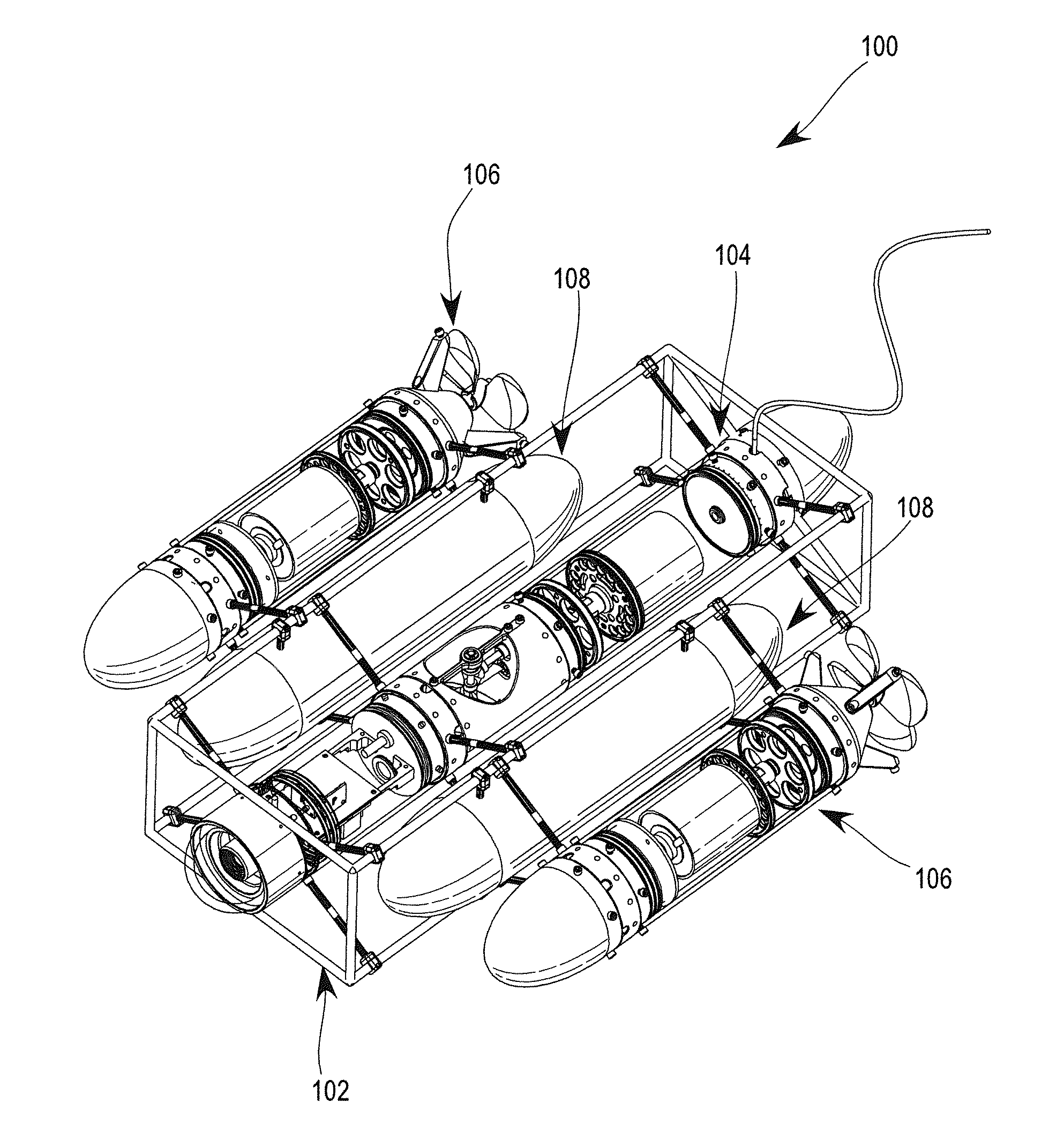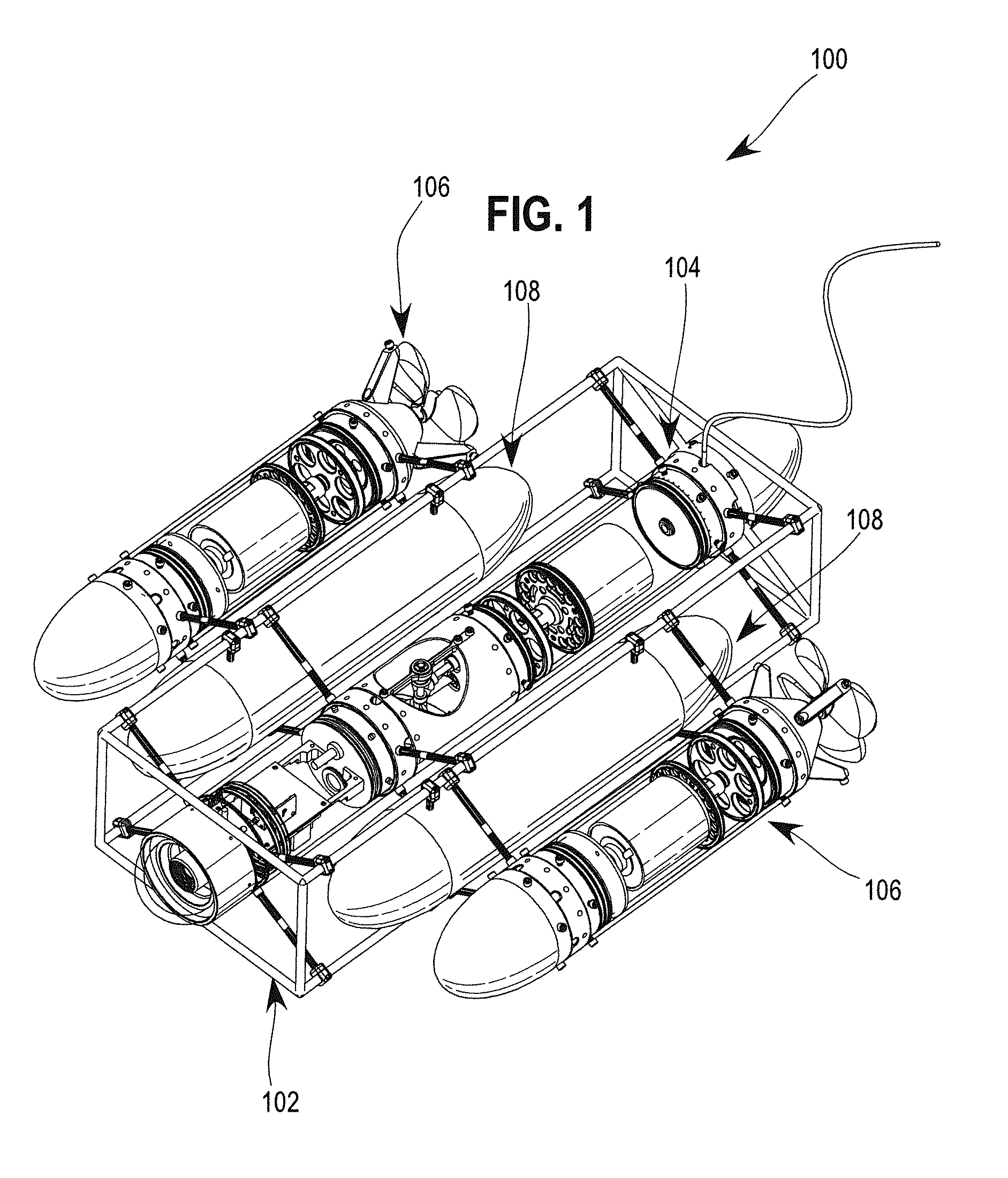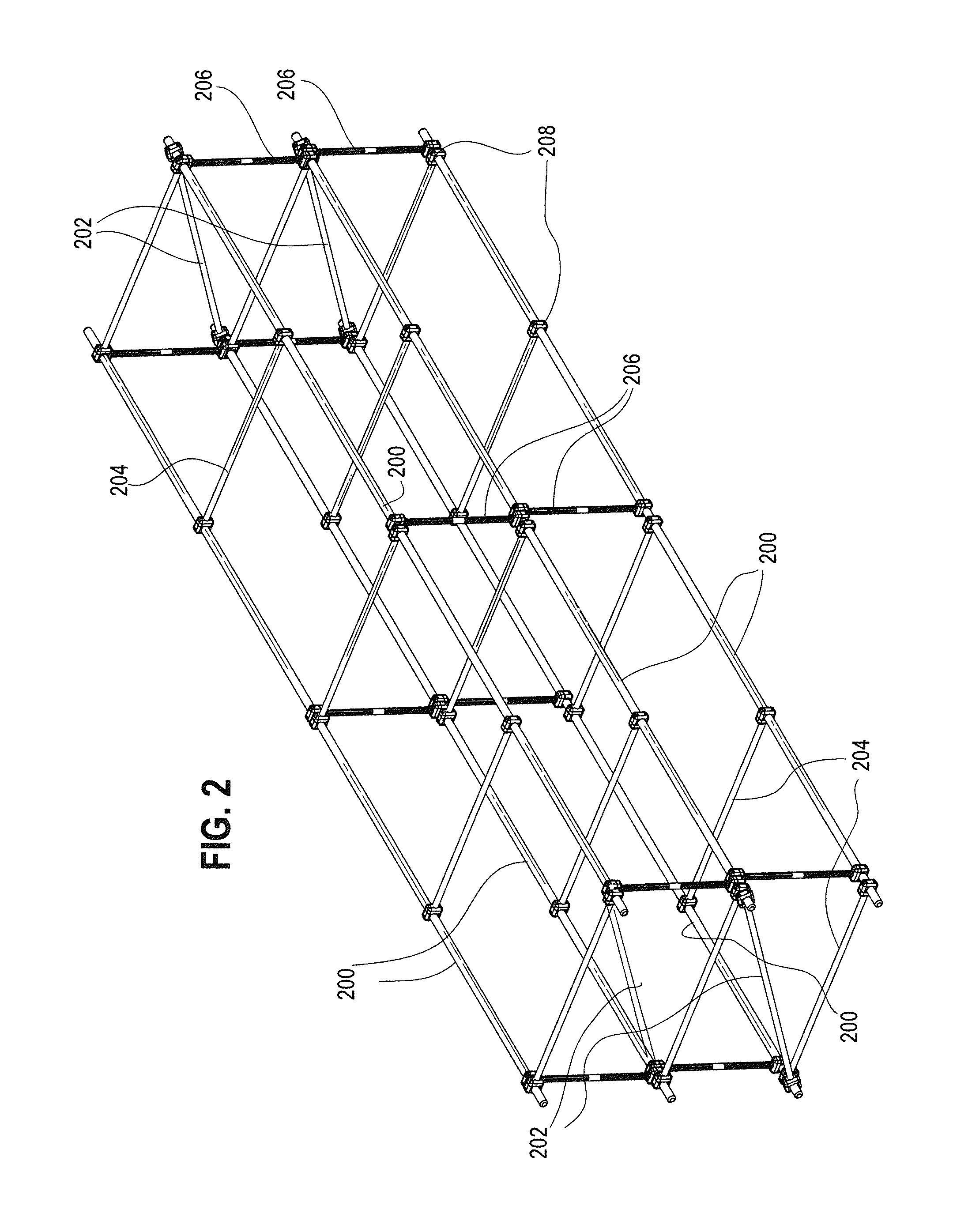Modular rapid development system for building underwater robots and robotic vehicles
a robotic vehicle and modular technology, applied in the field of autonomous underwater robots, can solve the problems of commercial underwater robotic systems exceeding the budgets of the majority of potential users of underwater robotic systems, the least expensive commercial system, and the existence of potential users for these potential users
- Summary
- Abstract
- Description
- Claims
- Application Information
AI Technical Summary
Benefits of technology
Problems solved by technology
Method used
Image
Examples
first embodiment
[0291]Referring next to FIG. 42, the mounting clip 4200 in a first embodiment is shown. Shown are a clip U-shaped portion 4202, two prongs 4204, a washer 4206, a nut 4208, and a clip threaded fastener 4210.
[0292]The mounting clip 4200 comprises the generally U-shaped portion 4202 (with the prongs 4204 of the U-shape oriented downward) including two rounded prongs 4204 configured to snap around the support column rail 2906 (or other longitudinal rod member), coupling the mounting clip 4200 to the support column rail 2906. A base of the U-shape is configured to allow for the nut 4208 to fit between the prongs 4204 at the base of the U-shaped portion 4202. The optional insulated washer 4206 is located on the outside face of the base of the U-shaped portion 4202. The base of the U-shaped portion 4202 includes a hole for the clip threaded fastener 4210, which passes through the washer 4206, base of the U-shaped portion 4202 and the nut 4208, thus coupling the clip assembly together. In u...
second embodiment
[0294]Referring next to FIG. 43, the mounting clip 4200 is shown. Shown are the U-shaped portion 4202, the clip threaded fastener 4210, the nut 4208, and the prongs 4204.
[0295]In the embodiment shown in FIG. 43, a head of the clip threaded fastener 4210 is located between the prongs 4204 of the u-shape, with a shaft of the clip threaded fastener 4210 oriented in the upward direction. The nut 4208 is coupled to the clip threaded fastener 4210 above the base of the U-shape. The base of the U-shape is configured to accommodate the head of the clip threaded fastener 4210 between the prongs 4204 instead of the nut 4208 as shown in FIG. 43. The prongs 4204 are shaped similarly the embodiment shown in FIG. 42, being configured to snap onto the support column rail 2906. As with the embodiment shown in FIG. 42, in use the prongs 4204 are snapped onto the support column rail 2906, and the rectangular PCB 3900 is coupled to the mounting clip 4200 using the clip threaded fastener 4210 and the n...
PUM
 Login to View More
Login to View More Abstract
Description
Claims
Application Information
 Login to View More
Login to View More - R&D
- Intellectual Property
- Life Sciences
- Materials
- Tech Scout
- Unparalleled Data Quality
- Higher Quality Content
- 60% Fewer Hallucinations
Browse by: Latest US Patents, China's latest patents, Technical Efficacy Thesaurus, Application Domain, Technology Topic, Popular Technical Reports.
© 2025 PatSnap. All rights reserved.Legal|Privacy policy|Modern Slavery Act Transparency Statement|Sitemap|About US| Contact US: help@patsnap.com



